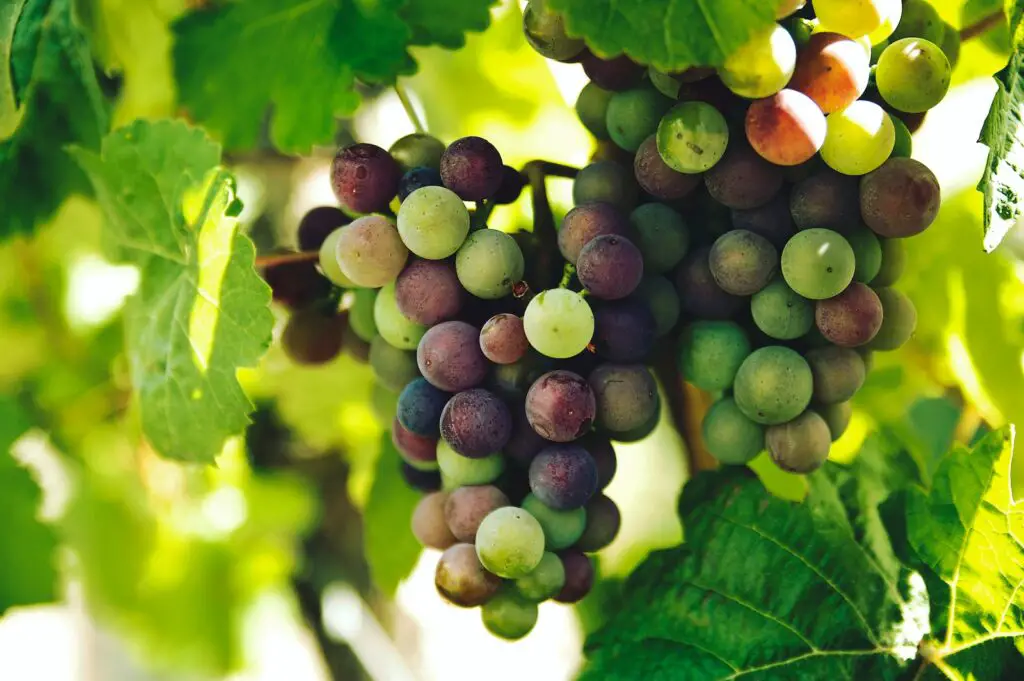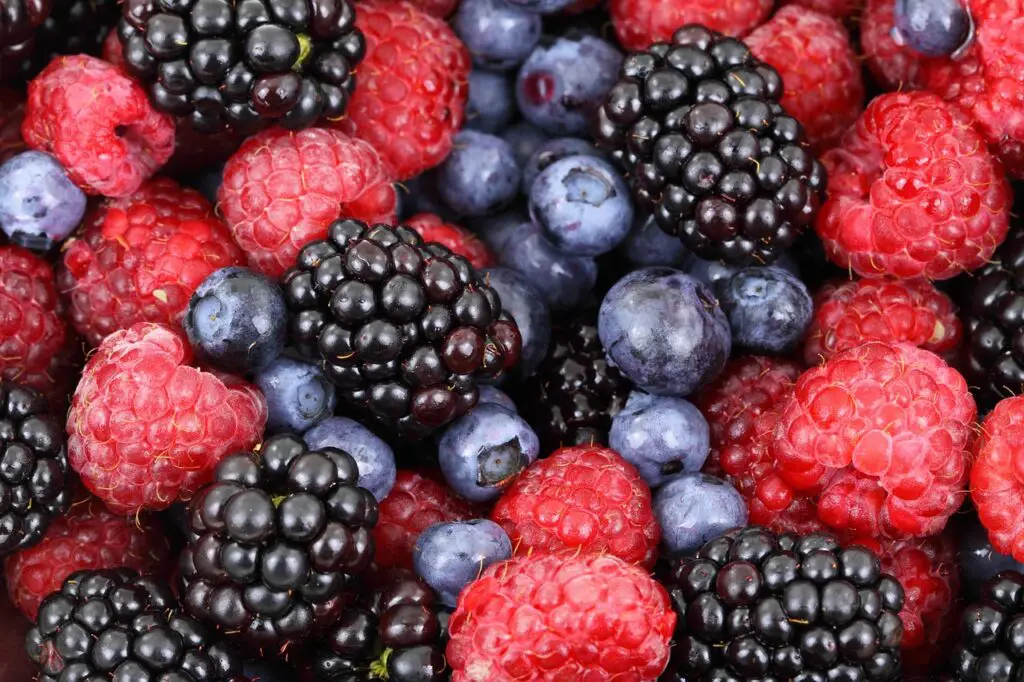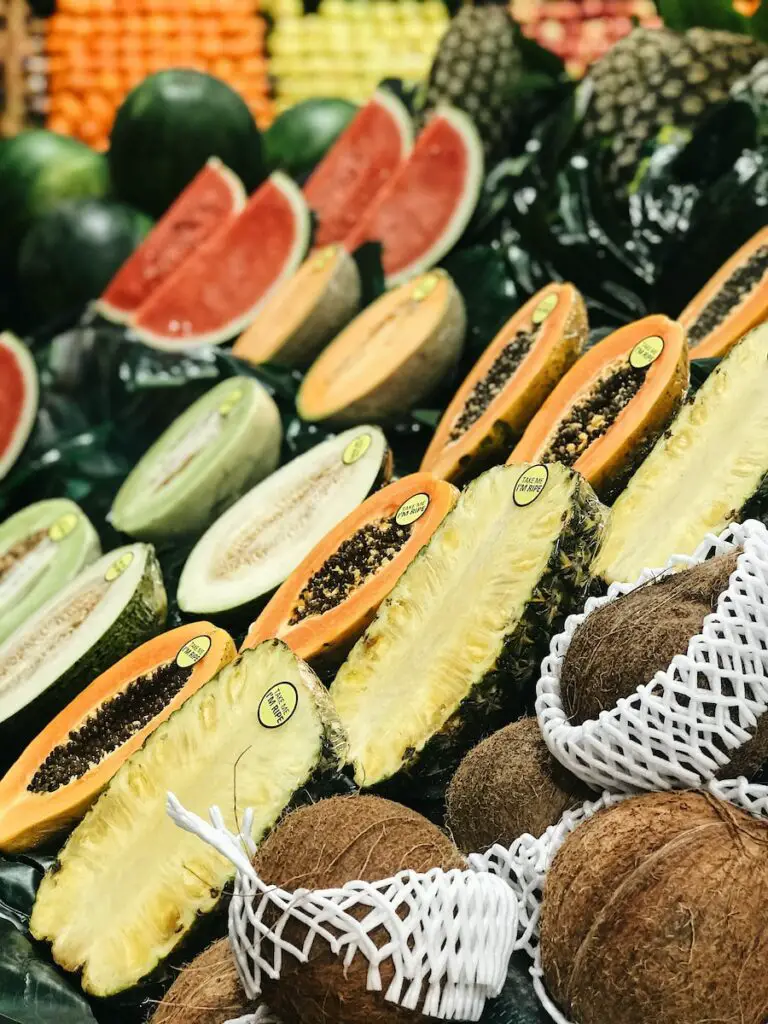
Fruits are a vital part of our diet, and they come in various forms, sizes, and shapes. Some fruits grow on trees, while others grow on vines. Vines are long, slender stems that grow along the ground or climb on other plants or structures. They are found in many different types of fruits and are an essential part of their growth.
Many people wonder what fruits grow on vines and how they differ from other types of fruits. Some of the most common fruits that grow on vines include grapes, watermelons, pumpkins, and cucumbers. These fruits are unique in the way they grow and require specific conditions to thrive.
In this article, we will explore the world of vine-grown fruits and examine the different types of fruits that grow on vines. We will also discuss the conditions necessary for their growth and the benefits they offer to our health. Whether you are a gardener, a fruit enthusiast, or just curious about the world of fruits, this article will provide you with valuable insights into the fascinating world of vine-grown fruits.
Table of Contents
Understanding Vine Fruits
Vine fruits are a type of fruit that grows on a vine or a climbing plant. These fruits are usually sweet and juicy, and they come in a variety of colors and flavors. Some of the most common vine fruits include grapes, kiwis, passion fruits, and melons.
One of the defining characteristics of vine fruits is that they grow on a vine or a climbing plant. This means that they need support to grow properly, and they often require trellises or other structures to keep them off the ground. Vine fruits also tend to have a high water content, which makes them juicy and refreshing.
Another important aspect of vine fruits is that they are often used in cooking and baking. Grapes, for example, are used to make wine, raisins, and grape juice. Kiwis are often used in salads and smoothies, while passion fruits are used to make jams and desserts. Melons, on the other hand, are a popular snack food and are often eaten raw.
When it comes to nutrition, vine fruits are generally high in vitamins and minerals. Grapes, for example, are a good source of vitamin C and potassium, while kiwis are high in vitamin K and fiber. Passion fruits are a good source of vitamin A and iron, while melons are high in vitamin A and potassium.
Overall, vine fruits are a delicious and nutritious addition to any diet. Whether you’re looking for a sweet snack or a flavorful ingredient for your next recipe, there is sure to be a vine fruit that fits the bill.
Types of Vine Fruits
Vine fruits are a diverse group of fruits that grow on vines and have a wide range of tastes, textures, and colors. In this section, we will discuss the three main types of vine fruits: berries, melons, and exotic fruits.
Berries

Berries are a popular type of vine fruit that includes grapes, blackberries, strawberries, raspberries, gooseberries, and more. These fruits are typically small, juicy, and packed with flavor. They are also rich in vitamins, minerals, and antioxidants, making them a healthy addition to any diet.
Grapes are perhaps the most well-known type of berry that grows on vines. They come in a variety of colors, including green, red, and purple, and can be eaten fresh or used to make wine. Blackberries, raspberries, and strawberries are also popular types of berries that grow on vines. They are often used in desserts, jams, and other sweet treats.
Melons

Melons are another type of vine fruit that includes watermelon, cantaloupe, honeydew, and muskmelon. These fruits are typically large, juicy, and sweet, with a refreshing taste that is perfect for hot summer days.
Watermelon is perhaps the most well-known type of melon that grows on vines. It is a large, round fruit with a green rind and juicy red flesh. Cantaloupe and honeydew are also popular types of melons that grow on vines. They are often used in fruit salads, smoothies, and other refreshing summer drinks.
Exotic Fruits
Exotic fruits are a diverse group of vine fruits that includes kiwi, dragon fruit, pineapple, figs, and more. These fruits are typically more unusual and less well-known than berries and melons, but they are still packed with flavor and nutrition.
Kiwi is a small, fuzzy fruit that is packed with vitamin C and other essential nutrients. Dragon fruit is another exotic fruit that is known for its unique appearance and sweet, refreshing taste. Pineapple and figs are also popular types of exotic fruits that grow on vines. They are often used in desserts, smoothies, and other sweet treats.
Overall, vine fruits are a diverse group of fruits that are packed with flavor, nutrition, and health benefits. Whether you prefer berries, melons, or exotic fruits, there is a vine fruit out there that is perfect for you.
Cultivation and Care
Soil and Water Requirements
Fruit vines generally prefer well-draining soil that is rich in organic matter. The ideal soil pH for most fruit vines is between 6.0 and 7.0. Adequate soil moisture is important for proper growth and fruit production, but overwatering can lead to root rot. It is recommended to water fruit vines deeply once a week, or more frequently in hot, dry weather.
Climate and Hardiness Zones
Different fruit vines have different temperature and hardiness zone requirements. For example, passionfruit and dragon fruit prefer warm, tropical climates, while cucumbers and squashes prefer cooler temperatures. It is important to choose fruit vines that are well-suited for the growing conditions in your area.
Pruning and Training
Proper pruning and training are essential for maintaining the structure and health of fruit vines. Trellises, pergolas, and other structures can be used to support fruit vines and encourage upward growth. Regular pruning can help to control the size and shape of the vine, as well as promote fruit production.
Fertilizing and Disease Resistance
Fruit vines require regular fertilization to maintain healthy growth and fruit production. A balanced fertilizer, such as a 10-10-10 or 20-20-20 formula, can be applied every four to six weeks during the growing season. Disease resistance is also an important consideration when choosing fruit vines. Some fruit vines, such as the Actinidia deliciosa (kiwi) and Passiflora edulis (passionfruit), are known for their disease resistance.
Overall, proper cultivation and care are essential for the successful growth and fruit production of fruit vines. By providing adequate soil and water, choosing the right growing conditions, and providing proper pruning and training, gardeners can enjoy a bountiful harvest of delicious fruit from their climbing vines.
Harvesting and Uses
Harvesting Techniques
Harvesting vine fruits requires a bit of finesse to ensure that the fruit is not damaged during the process. The best time to harvest vine fruits varies depending on the specific fruit. For example, watermelons are ready to harvest when the tendril closest to the fruit is dry and brown, while kiwi fruits are ready when they are firm to the touch and the skin is slightly fuzzy.
When harvesting vine fruits, it’s important to use clean, sharp tools to avoid damaging the fruit or the vine. For larger fruits like watermelons, it’s best to use a sharp knife to cut the fruit from the vine. For smaller fruits like tomatoes, they can be gently twisted off the vine.
Uses of Vine Fruits
Vine fruits are some of the most delicious fruits available, and they can be used in a variety of ways. Some vine fruits, like watermelons and mouse melons, are perfect for snacking on their own. Others, like kiwi fruits and tomatoes, can be used in a variety of recipes.
Kiwi fruits are a great addition to smoothies and can be used in pies and other desserts. Tomatoes are a staple ingredient in many savory dishes and can be used in salads, sauces, and more. Watermelons are a refreshing treat on a hot day and can be used in a variety of drinks and desserts.
In a home garden, vine fruits can be trained to grow vertically to save space. Pruning and training can also help prevent pests and diseases from taking hold. Cuttings can be taken from healthy vines and used to start new plants in a different growing area.
Incorporating Vine Fruits in Your Landscape
Vine fruits can be a great addition to any landscape, providing both beauty and functionality. Here are some tips for incorporating vine fruits into your outdoor space:
Trellis Options
One of the most common ways to grow vine fruits is on a trellis. This allows the fruits to grow vertically, saving space and creating an attractive focal point. There are many different trellis options available, including wooden, metal, and PVC trellises. Choose one that fits your style and budget.
Trees
Another option for growing vine fruits is to train them to grow on trees. This can create a natural and beautiful look in your landscape. However, it’s important to choose the right tree species and ensure that the vine fruits will not harm the tree.
Adding Color
Many vine fruits produce colorful fruits and flowers, adding visual interest to your landscape. Consider planting a variety of vine fruits with different colors to create a vibrant and eye-catching display.
Recipes
Homegrown vine fruits can be used in a variety of recipes, from jams and jellies to pies and salads. Incorporating vine fruits into your landscape can provide a tasty and healthy addition to your diet.
Homegrown Fruit
Growing your own vine fruits can be a rewarding experience, allowing you to enjoy fresh, homegrown fruit right in your own backyard. Plus, it’s a great way to save money on grocery bills.
Landscape Design
When incorporating vine fruits into your landscape, it’s important to consider the overall design and layout. Choose a location that provides enough sunlight and space for the fruits to grow. Additionally, consider how the vine fruits will fit in with the rest of your landscape design.
Incorporating vine fruits into your landscape can be a fun and rewarding experience. With the right trellis, tree, or other support, you can grow a variety of colorful and delicious fruits right in your own backyard.